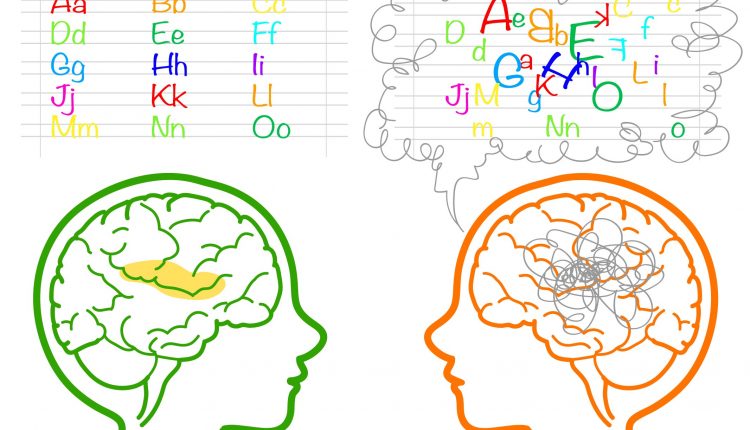
Specific Learning Disorders (SLD): manifestations and diagnosis of dyslexia
Dyslexia is a Specific Learning Disorder (SLD). This term refers only to disorders of scholastic abilities and in particular: dyslexia, dysorthography, dysgraphia and dyscalculia
The characteristic feature of this category is specificity, i.e. the fact that the disorder affects a specific domain of ability (reading, writing, calculation) while leaving general intellectual functioning intact.
Therefore, to have a diagnosis of dyslexia, the child must not present: intelligence deficits, environmental or psychological problems, sensory or neurological deficits
Dyslexia is little known, although it is estimated that it affects 3-4% of the school population (primary and secondary school age group).
CHILD HEALTH: LEARN MORE ABOUT MEDICHILD BY VISITING THE BOOTH AT EMERGENCY EXPO
The dyslexic child can read and write, but can only do so by using his or her abilities and energy to the maximum, since he or she cannot do so automatically and therefore tires quickly, makes mistakes, falls behind, does not learn.
Difficulties in reading can be more or less severe and are often accompanied by problems in writing: dysorthography (i.e. a spelling difficulty, in 60% of cases) and dysgraphia (difficulty in fine-motor movement of writing, i.e. a poor formal performance, in 43% of cases), in calculating (44% of cases) and sometimes in other mental activities.
Nevertheless, these children are intelligent and usually lively and creative.
Signs and symptoms of dyslexia
Dyslexia is manifested by incorrect reading (number of errors made when reading) and/or slow reading (time taken to read) but also by difficulty in understanding written text independent of both listening comprehension and decoding disorders (correctness and speed) of written text.
The child often makes characteristic errors in reading and writing such as reversing letters and numbers (e.g. 21 – 12) and letter substitutions (m/n; v/f; b/d).
Sometimes fails to learn multiplication tables and some sequential information such as the letters of the alphabet, days of the week, months of the year.
He may confuse spatial and temporal relationships (right/left; yesterday/sorrow; months and days; reading the clock) and may have difficulty expressing verbally what he thinks.
In some cases there are also difficulties in some motor skills (e.g. tying shoes), attention span and concentration.
Often the child ends up with psychological problems, such as demotivation, low self-esteem, but these are a consequence, not the cause of dyslexia.
Diagnosis of dyslexia
The diagnosis is made at the end of the second year of primary school.
As early as the end of the first year of primary school, however, impaired functional profiles and the presence of other specific diagnostic indicators (language delay and a positive family history of ASD) may anticipate the terms of the diagnostic formulation.
The diagnosis is made by a multidisciplinary team consisting of a child neuropsychiatrist, psychologist, pedagogue and speech therapist, i.e. experienced specialists, using specific tests.
The diagnosis finally makes it possible to understand what is going on and to avoid the most common errors such as blaming the child (‘he does not learn because he does not try’) and attributing the cause to psychological problems, errors that lead to suffering and frustration.
The professional should draw up a written report indicating the reason for the referral, the tests used and the final diagnosis.
Once the diagnosis has been made, specific aids, rehabilitation and compensation techniques can be put in place, as well as some simple measures of didactic modification in favour of dyslexic children and contained in the Ministerial directives (law 8/10/2010), such as granting longer times for carrying out tasks, the use of calculators and/or computers.
These measures must also be able to be used in assessment moments, including State examinations.
Dyslexics have a different way of learning but still learn.
Read Also:
Emergency Live Even More…Live: Download The New Free App Of Your Newspaper For IOS And Android
ADHD Or Autism? How To Distinguish Symptoms In Children
Autism, Autism Spectrum Disorders: Causes, Diagnosis And Treatment
Intermittent Explosive Disorder (IED): What It Is And How To Treat It
Management Of Mental Disorders In Italy: What Are ASOs And TSOs, And How Do Responders Act?
How Cognitive Behavioural Therapy Works: Key Points Of CBT
12 Essential Items To Have In Your DIY First Aid Kit
Anxiety: A Feeling Of Nervousness, Worry Or Restlessness
Hesitation When Driving: We Talk About Amaxophobia, The Fear Of Driving
Rescuer Safety: Rates Of PTSD (Post-Traumatic Stress Disorder) In Firefighters
Schizophrenia: Risks, Genetic Factors, Diagnosis And Treatment
Why Become A Mental Health First Aider: Discover This Figure From The Anglo-Saxon World
Attention Deficit Hyperactivity Disorder: What Worsens ADHD Symptoms
From Autism To Schizophrenia: The Role Of Neuroinflammation In Psychiatric Diseases
Does Your Child Suffer From Autism? The First Signs To Understand Him And How To Deal With Him
Autism, What Do You Know About Autism Spectrum Disorders?
What Is Autism Spectrum Disorder (ASD)? Treatment For ASD



